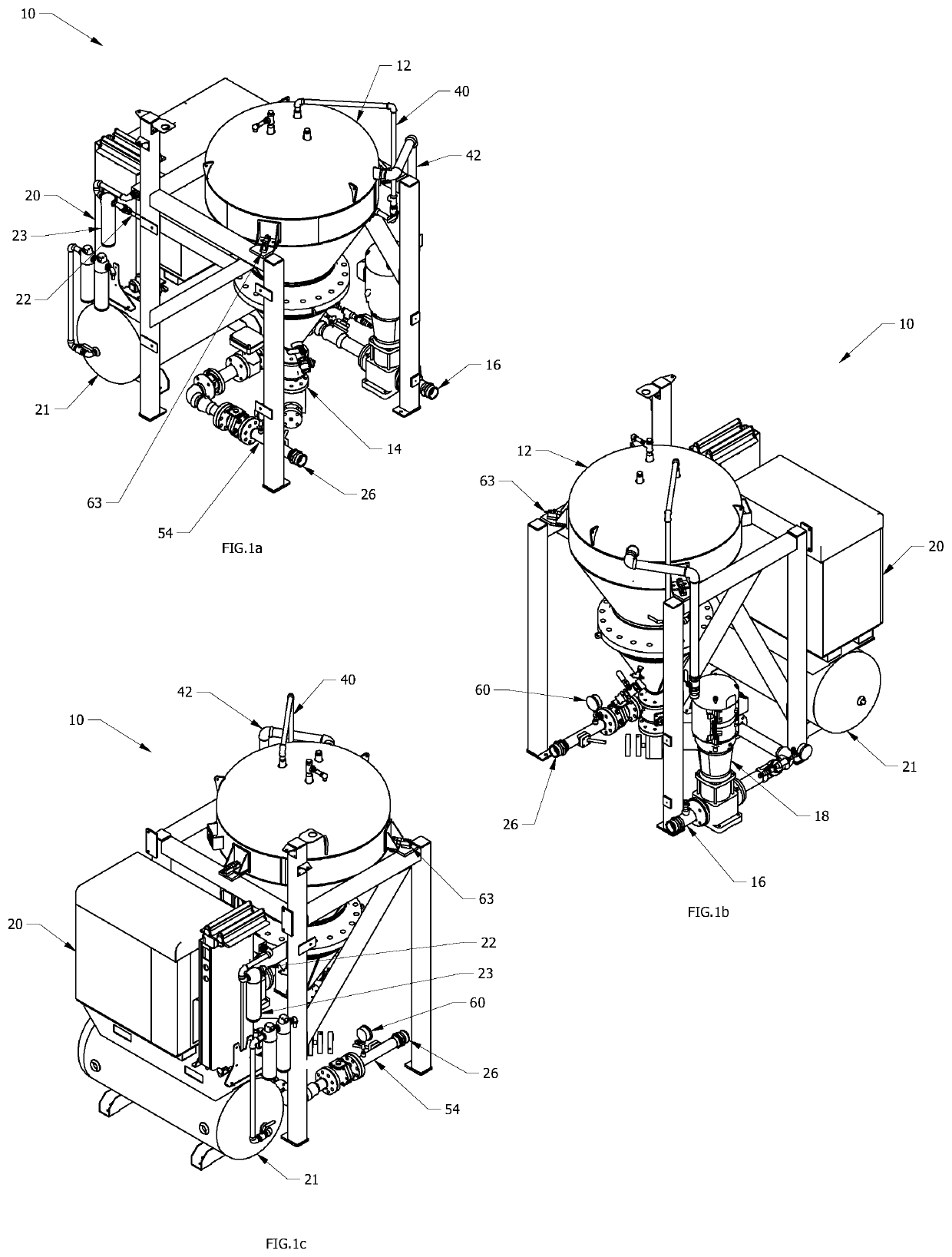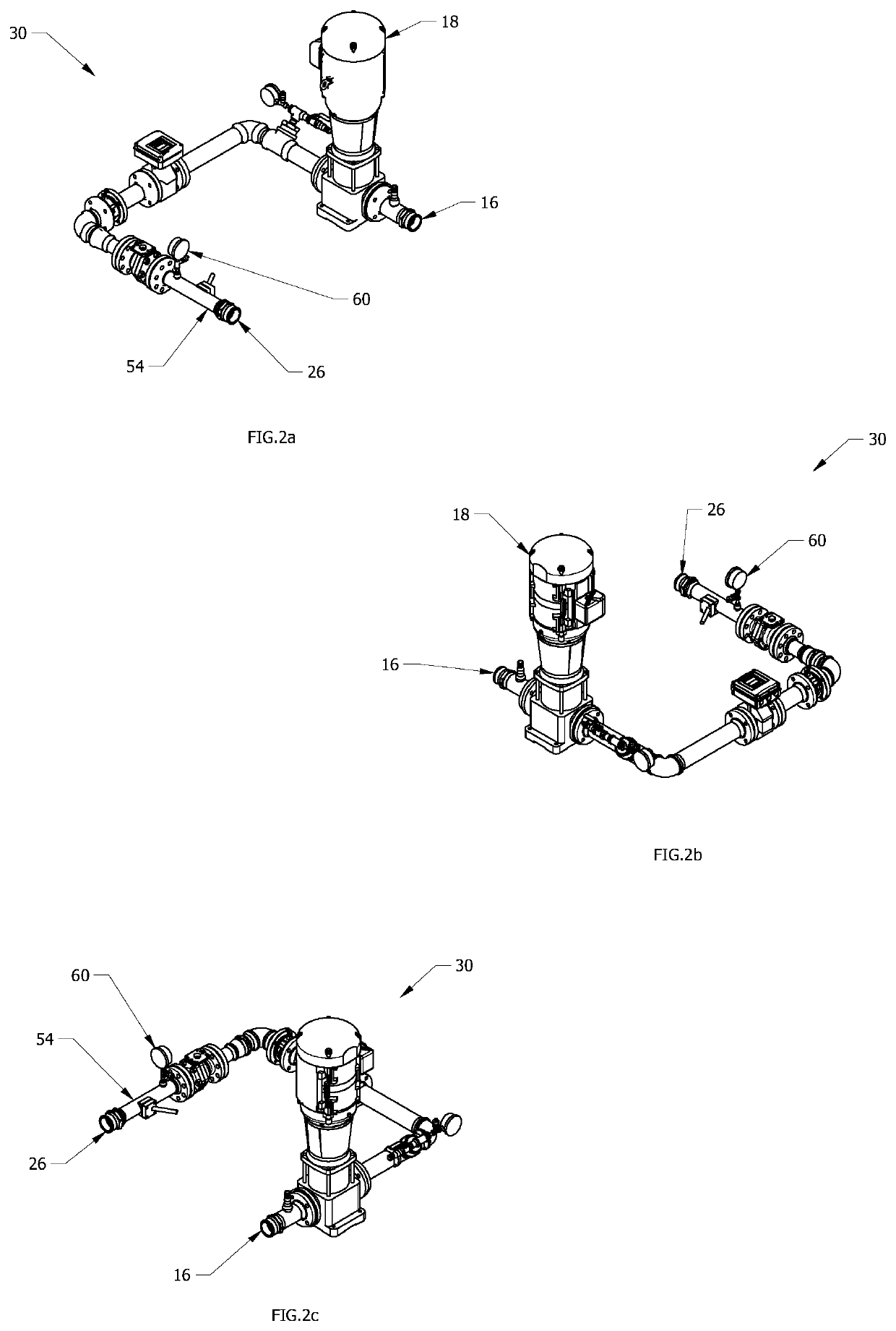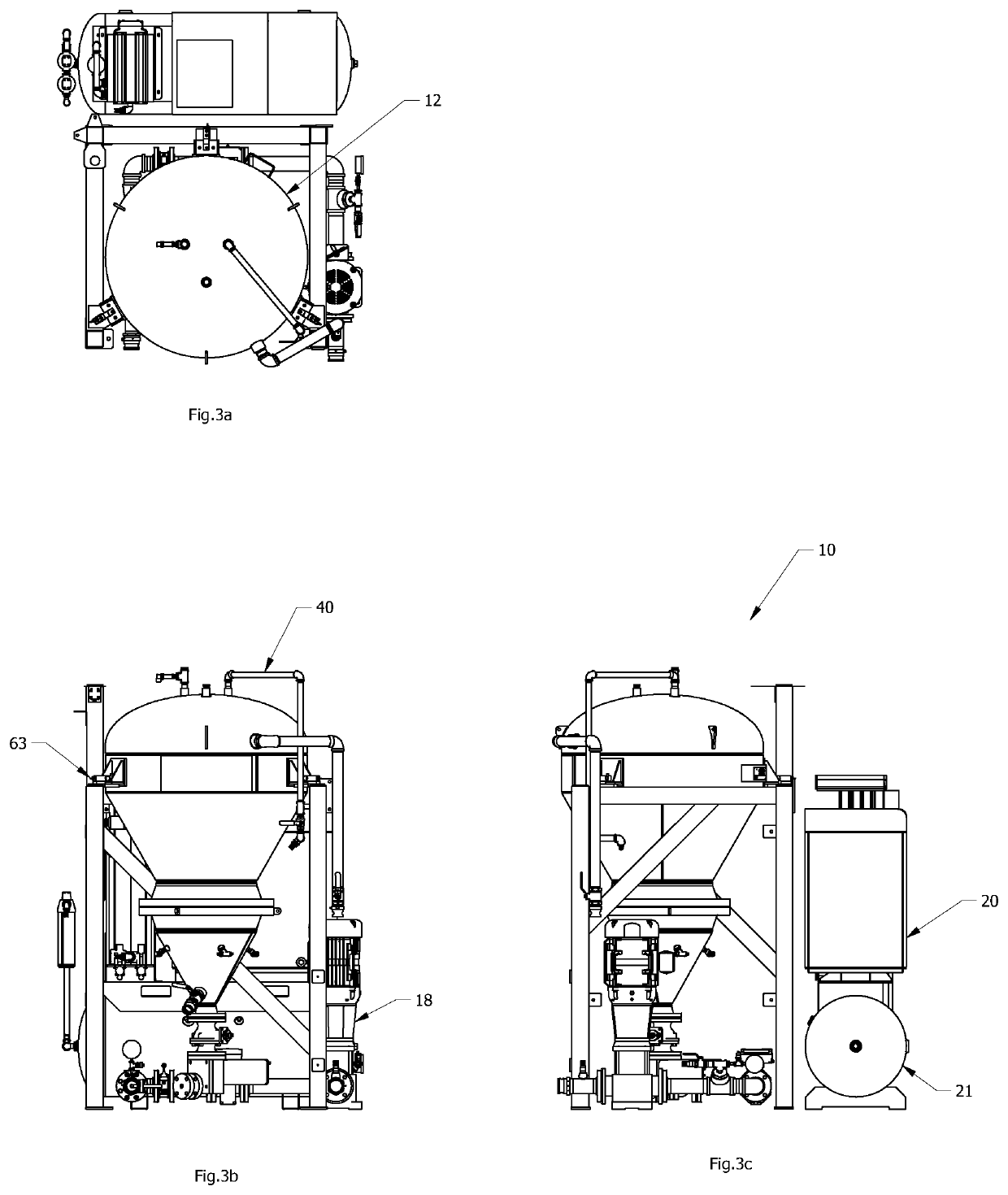Gel production system and method
- Summary
- Abstract
- Description
- Claims
- Application Information
AI Technical Summary
Benefits of technology
Problems solved by technology
Method used
Image
Examples
Embodiment Construction
[0043]Throughout the following description specific details are set forth in order to provide a more thorough understanding to persons skilled in the art. However, well known elements may not have been shown or described in detail to avoid unnecessarily obscuring the disclosure. The following description of an example of the technology is not intended to be exhaustive or to limit the invention to the precise form of any exemplary embodiment. Accordingly, the description and drawings are to be regarded in an illustrative, rather than a restrictive, sense.
[0044]Turning to FIGS. 1a to 3c, a gel production system 10 is illustrated, and specifically a system 10 for producing a fire-retardant gel for use in firefighting operations. It will be clear to those skilled in the art that other useful gels could be produced using the present invention and the exemplary embodiments described herein. The system 10 comprises a pressure vessel 12 for supplying powder (not shown) for use in generating...
PUM
| Property | Measurement | Unit |
|---|---|---|
| Pressure | aaaaa | aaaaa |
| Flow rate | aaaaa | aaaaa |
| Concentration | aaaaa | aaaaa |
Abstract
Description
Claims
Application Information
 Login to View More
Login to View More - R&D
- Intellectual Property
- Life Sciences
- Materials
- Tech Scout
- Unparalleled Data Quality
- Higher Quality Content
- 60% Fewer Hallucinations
Browse by: Latest US Patents, China's latest patents, Technical Efficacy Thesaurus, Application Domain, Technology Topic, Popular Technical Reports.
© 2025 PatSnap. All rights reserved.Legal|Privacy policy|Modern Slavery Act Transparency Statement|Sitemap|About US| Contact US: help@patsnap.com



